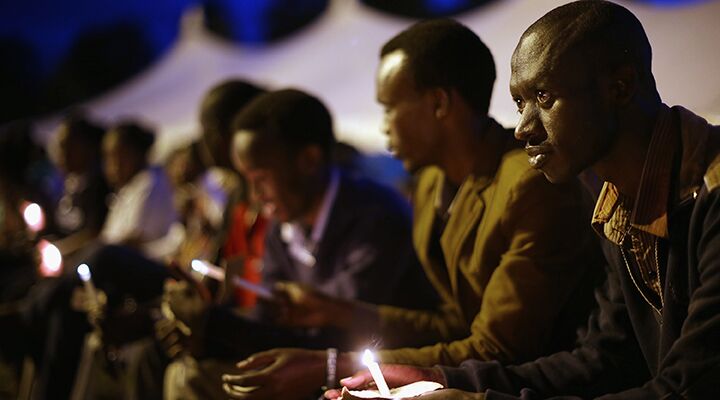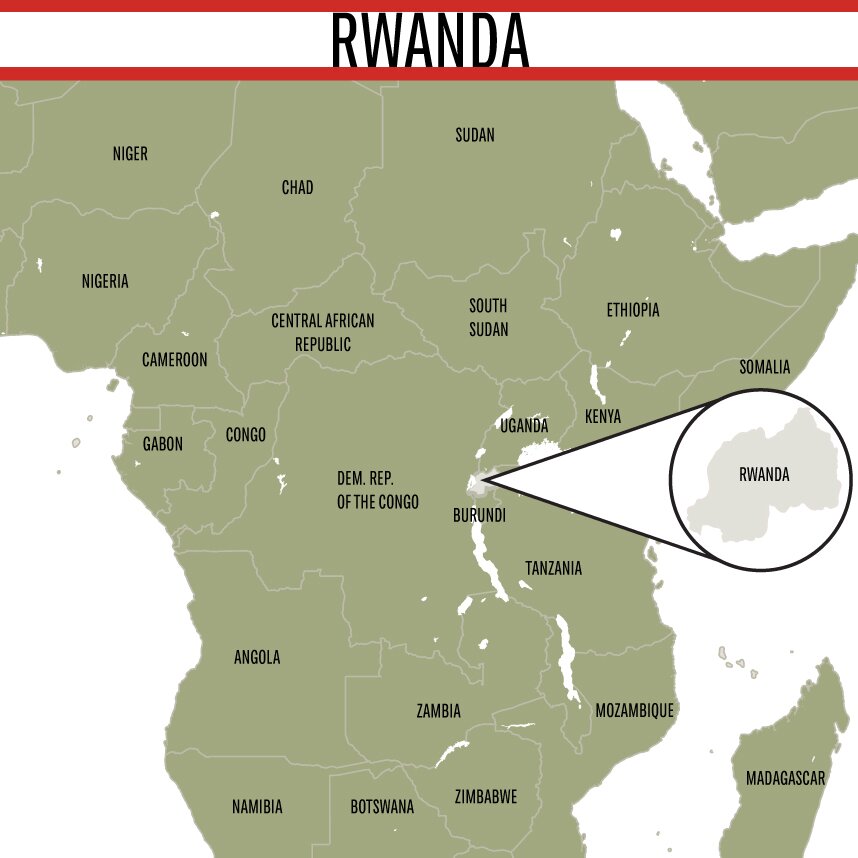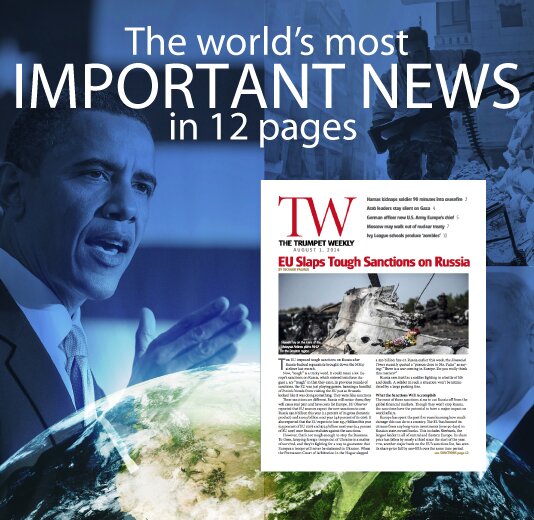
Rwanda: The Unlearned Lessons of Complacency
On the 20th anniversary of the Rwandan genocide, the Holocaust Museum’s Center for the Prevention of Genocide and the Hague Institute for Global Justice held a three-day review of the events surrounding the genocide. This year, on the 21st anniversary, the 240-page report is being released to the public. Among its main conclusions is that United States President Bill Clinton was fully aware of the risk of genocide but did nothing to prevent it.
As declassified White House cables show, President Clinton was briefed nearly one year in advance of the impending ethnic cleansing in the African nation. As far back as 1992, a cable to Washington gave the warning that there was a: “Ku Klux Klan-like approach to ethnic relations” that was “widely interpreted as a call for the extermination of Tutsis.”
In the months leading to the assassination of the Rwandan president, the event that sparked the genocide, several reports and warnings were sent to the U.S. government. The Belgian foreign minister was interviewed by American officials on his return from Rwanda, in which he warns that the country appeared to be heading toward “an almost structural confrontation” between the majority Hutu and minority Tutsi populations.
Joyce Leader, the American official who sent that cable, said at the convention: “We had a very good sense of what was taking place …. It was clear that a systematic killing of Tutsi was taking place in neighborhoods.”
The commander for the United Nations Assistance Mission for Rwanda (unamir), Lt. Gen. Romeo Dallaire, sent to his UN superior an urgent message, now called the “genocide fax.” After being tipped off by an informant, Dallaire asked for permission to raid three arms stashes in Kigali that were being amassed for the planned genocide. He warned of an “anti-Tutsi extermination” plot. The coded cable also warned of the extremist plan to kill Belgian soldiers in order to force them to leave (which did happen).

Dallaire was not given authorization and thus a key moment to stop the conflict was lost. The fax was never circulated to the Security Council.
General Dallaire was reported during the conference saying: “President Clinton did not want to know. … I hold Clinton accountable. He can excuse himself as much as he wants to the Rwandans, but he established a policy that he did not want to know.”
The unamir peacekeeping mission was also nearly canceled, until a high-ranking ambassador and envoy were able to change the mind of the U.S. ambassador to the UN. Even then the mission was given little or no funding, and the force was eventually cut from 5,000 to 270 peacekeepers in the midst of the genocide. The UN force was able to save the lives of 20,000 Rwandans.
The main cause of U.S. timidity was the failed mission in Somalia. Only six months earlier, 18 U.S. soldiers died in Mogadishu, leading to President Clinton’s reluctance to use American power to intervene in African affairs. John Shattuck, the then-U.S. assistant secretary of state for labor, human rights and democracy, was reported by Foreign Policy as saying:
As the genocide unfolded in Rwanda six months later, the White House was finalizing a presidential directive, known as pdd-25, which placed severe constraints on the conditions required for U.S. support for peacekeeping missions. President Clinton, meanwhile, was preoccupied with producing a health-care bill and upcoming midterm congressional elections—and was determined to keep America out of any foreign military entanglements… .
In 100 days, 800,000 Rwandans perished. The well-planned genocide methodically swept the country and eliminated many Tutsis and moderate Hutus. Most died from machetes wielded by the incensed youth militia. In 1998, President Clinton visited Rwanda and said during his speech that he didn’t “fully appreciate the depth and the speed with which [Rwandans] were being engulfed by this unimaginable terror.”
While any intervention in Rwanda would have been a costly, dangerous and complex operation, consider the alternative. Many of those involved have publicly recognized their failure in regards to Rwanda 21 years ago. The real question now is, will the United States allow it to happen again?
Can you imagine a regime, like that of the genocidal Hutu extremists, having nuclear weapons?
You don’t have to try very hard.
Iran has openly declared its intention to destroy the nation of Israel, and all Jews in the Middle East. The latest of such statements came on March 31 when an Iranian leader in the Islamic Revolutionary Guard Corps said the destruction of Israel is non-negotiable. In November 2014, Iranian Supreme Leader Ayatollah Khamenei gave a nine-point plan on how to destroy Israel. Declarations of foreign policy do not come much clearer than that.
Only the threat today is far greater than what occurred in Rwanda 21 years ago. The threat to destroy the Jews is not even the worst possible outcome, but it extends to the entire Western world. At the heart of the matter is not the survival of one race but the survival of mankind.
Last week, the United States announced a tentative agreement had been reached at the P5+1 nuclear talks with Iran. While the full agreement still involves months of negotiations, the framework of the agreement did little to prevent Iran from acquiring nuclear weapons. Leaving its nuclear infrastructure in place and not closing any facilities, it will be able to continue enriching uranium. Israeli Prime Minister Benjamin Netanyahu has condemned the deal, stating it is a threat to Israel’s survival.
U.S. President Barack Obama admitted during an npr interview that the deal does not stop Iran’s capability to acquire a weapon, but rather delays it for 13 years, leaving it a problem for future presidents. And that is only if Iran adheres to the agreement (which it does not have a history of doing).

However, as bad as a regional conflict would be, the stakes are even higher. If Iran can obtain nuclear weapons, what will prevent the proliferation of weapons of mass destruction in other nations? Or by terrorist organizations? If a supreme crisis occurs, will the U.S. intervene to prevent the unthinkable? If Iran did use nuclear weapons, where would it stop? Any nuclear conflict would quickly escalate to worldwide catastrophe.
In 1994, the United States had the option to halt the destruction of a race of people. In 2015, the United States has the choice to halt a nation that promises nuclear genocide. Only 21 years after our failure in Rwanda, has the United States, and the world, learned the lessons from being complacent? Can America sit back and watch Iran acquire a nuclear bomb, and not expect it spread around the world? Can a man light a fire and not expect it to spread?
This complacency is disturbing. Only 21 years after failing to act for the people of Rwanda, the current administration seems set to repeat the same mistakes. The Trumpet has long forecast that the U.S. will not prevent the unthinkable from happening, and neither will it learn the lessons from failure until it is too late. However, there is a solution that is coming soon. To know more about the most urgent threat facing you, please read our free booklets The King of the South and We Have Had Our Last Chance.
